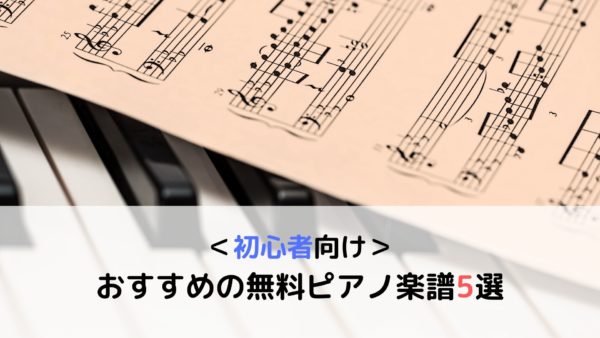
ピアノを弾く姿勢や指の形、楽譜の読み方などをマスターしたら次は実際に曲の練習です。
でも最初にどんな曲を練習したらいいか分かりませんよね。
バイエルなどの教本を買って、載っている曲を一つ一つ練習していくこともいいですが、聞いたことがない曲ばかりでやっていて面白くなくなってしまうことがあります。
そこで今回は誰もが1度は聞いたことがある有名曲の楽譜を難易度順に5つ紹介します。
紹介する楽譜はすべて無料で使える楽譜です。
すぐに使えますので、ちょっと試しに弾いてみて面白くなかったら別の楽譜を弾いてみましょう。
楽譜の画像をクリックすると掲載しているサイトに飛びますので、画質が荒れて見にくい方はリンク先を参照してください。
初心者向けの簡単なものを選んでいますが、すべて両手で演奏する楽譜です。
右手と左手の両手での演奏もまだ慣れていない方は、今回ご紹介する楽譜を練習して技術を習得していきましょう。
①きらきら星
誰もが小さい頃に歌ったことがある「きらきら星」です。
きらきら星のメロディーは、おそらくピアノを練習したことがない人でもすぐに弾けるほど簡単なものですね。
しかし、右手のメロディーに左手の伴奏を加えるとピアノ初心者の方にはいい練習になります。
こちらは非常に簡単な伴奏、初心者でも弾きやすい楽譜です。
まずはこのきらきら星で、「両手で弾く練習」をしてみましょう。
もちろん最初は右手だけ、左手だけを練習してからです。
ちなみに音符の上下に記載してある数字は指番号です。
一つ一つ確認しながらゆっくり演奏してみましょう。
キラキラ星の他の楽譜はこちら↓
民謡・童謡の無料楽譜はこちらにも掲載中↓
②ジングルベル
こちらも非常に有名な曲の「ジングルベル」です。
毎年クリスマスの時期になると、どこかしらで耳にするのではないでしょうか。
①の「きらきら星」よりも親しみがある方も多いかもしれません。
「きらきら星」に比べてテンポが早いので少しだけ難易度が高くなっています。
最初は楽譜のテンポよりもゆっくりした早さで練習していきましょう。
ジングルベルの他の楽譜はこちら↓
③ハッピーバースデー トゥーユー
誕生日に歌う曲といえばコレですね。
楽譜だけ見ると最初に付点8分音符に16分音符とつながり、わけが分からなくなりそうです。
しかし、自分が知っている曲だと頭の中に音が流れてきて演奏しやすいです。
自分の頭の中で「ハッピバースデー・・・」とリズムを刻みながら、もしくは歌いながら演奏してみましょう。
こういう風に知っている曲を演奏していくと、体感的に音符の長さを掴めるようになりますよ。
ハッピーバースデーの他の難易度の楽譜はこちら↓
④歓喜の歌
4曲目はベートーベン作曲の「歓喜の歌」です。
「はれたるあおぞら♪」の歌詞で有名ですね。
原曲を再現したらとても難しい楽譜になりますが、こちらは簡単にアレンジしています。
ただ、左手はやや手を動かして演奏する必要があり、3音を同時に引く必要があります。
まずは右手と左手を別々に練習してから演奏してみましょう。
歓喜の歌の他の難易度の楽譜はこちら↓
⑤小さな世界
最後はディズニーの小さな世界です。
童謡としても非常に有名な曲ですね。
右手の音域が少し広く、左手が少し早いので少しむずかしいです。
最初の2小節がすらすら弾ければ全体も弾けるようになるでしょう。
これをスムーズに弾けるようになったら入門難易度は卒業です。
他の難易度のディズニーの無料楽譜はこちら↓
番外編
最後に番外編でスタジオジブリの「天空の城ラピュタ」のエンディングテーマの「君をのせて」を紹介します。
全体としては比較的かんたんですが、ラ・シ・ミにフラットが付きます。
黒鍵を使った練習曲としてはぴったりですので紹介させていただきました。
聞いたことがない方は「君をのせて」で検索してみてください。
ジブリの他の無料楽譜はこちら↓
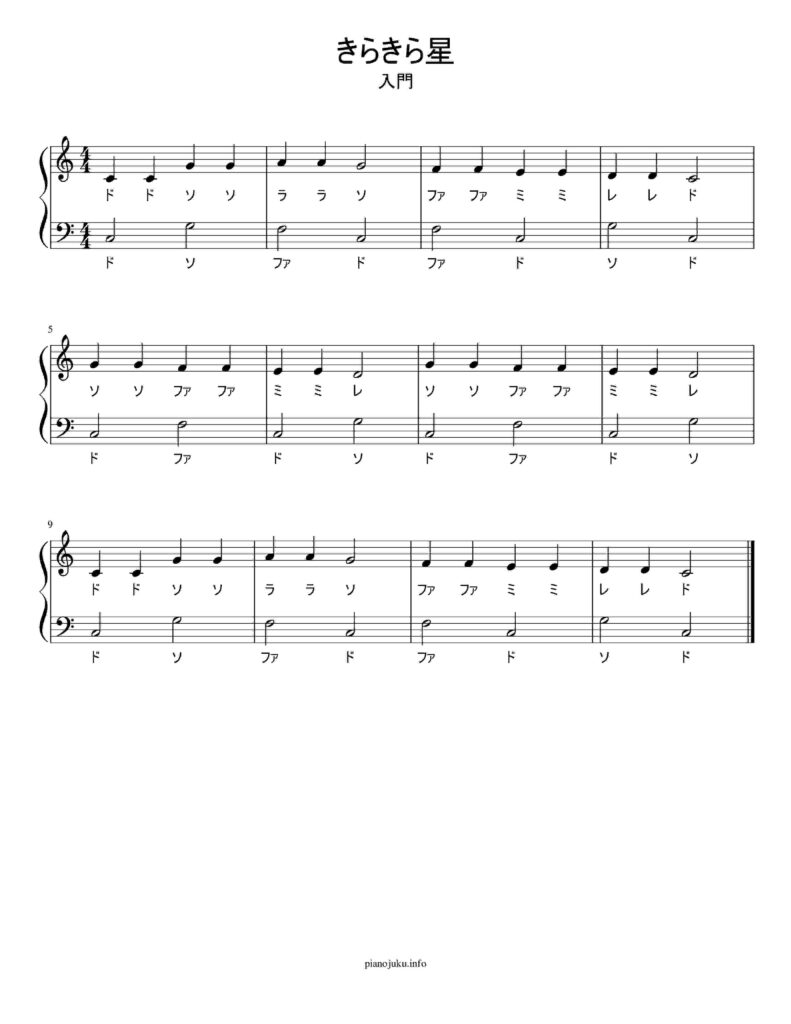

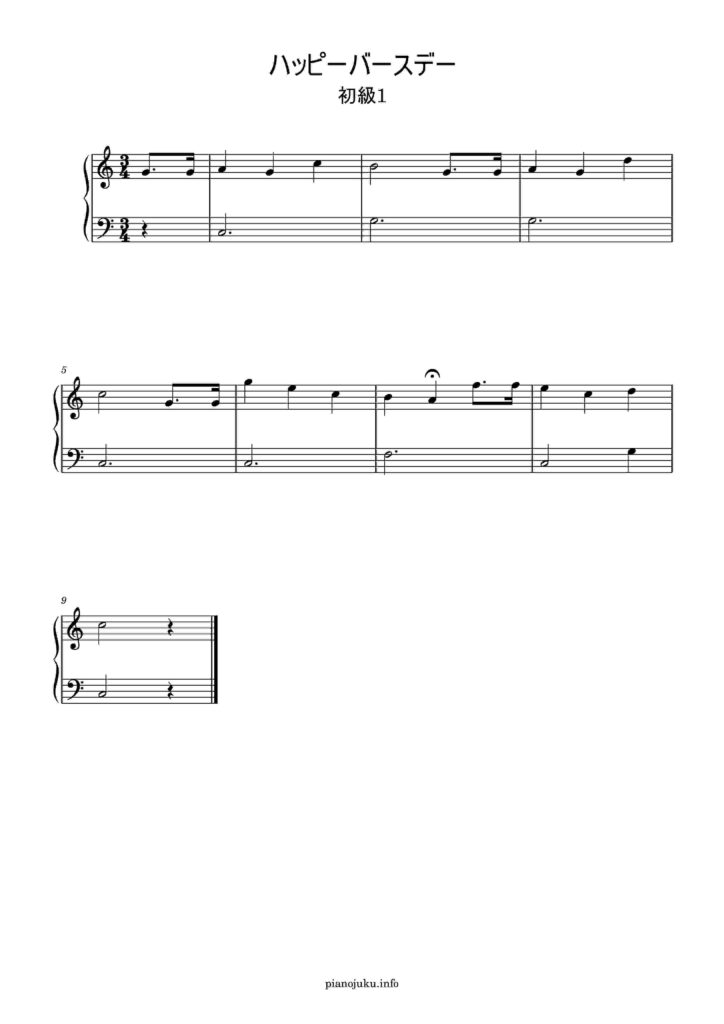
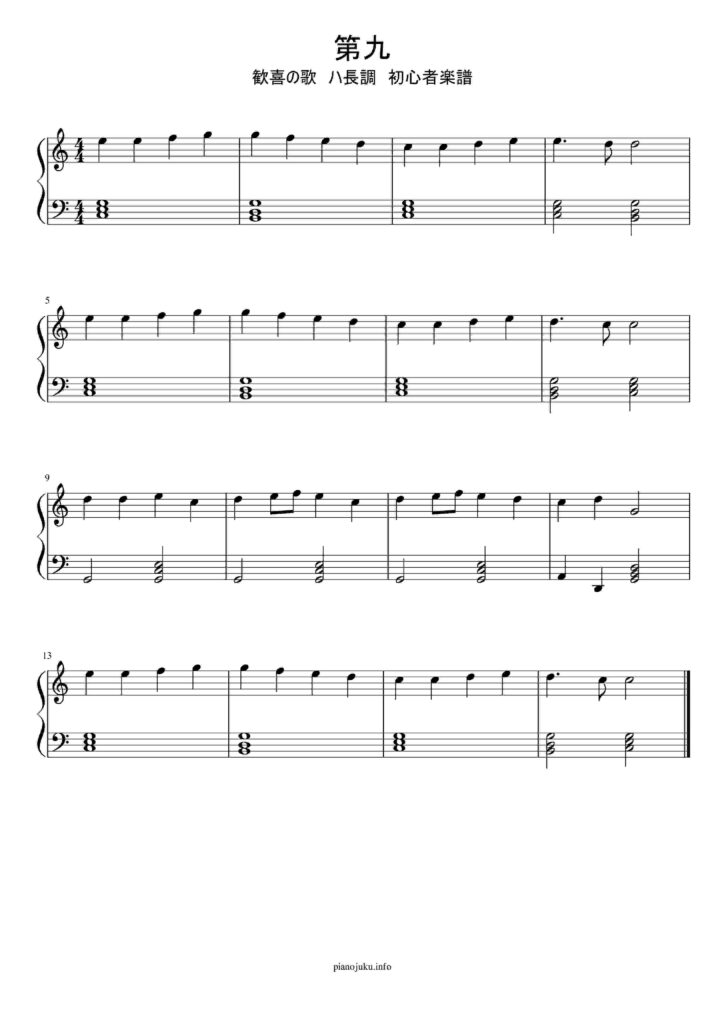
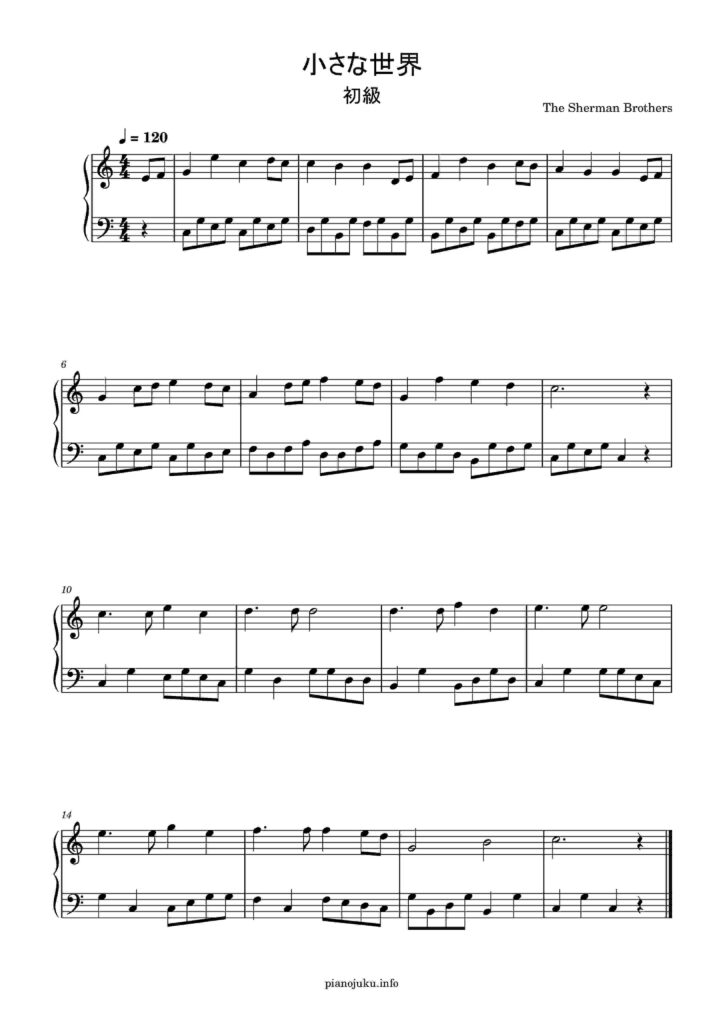
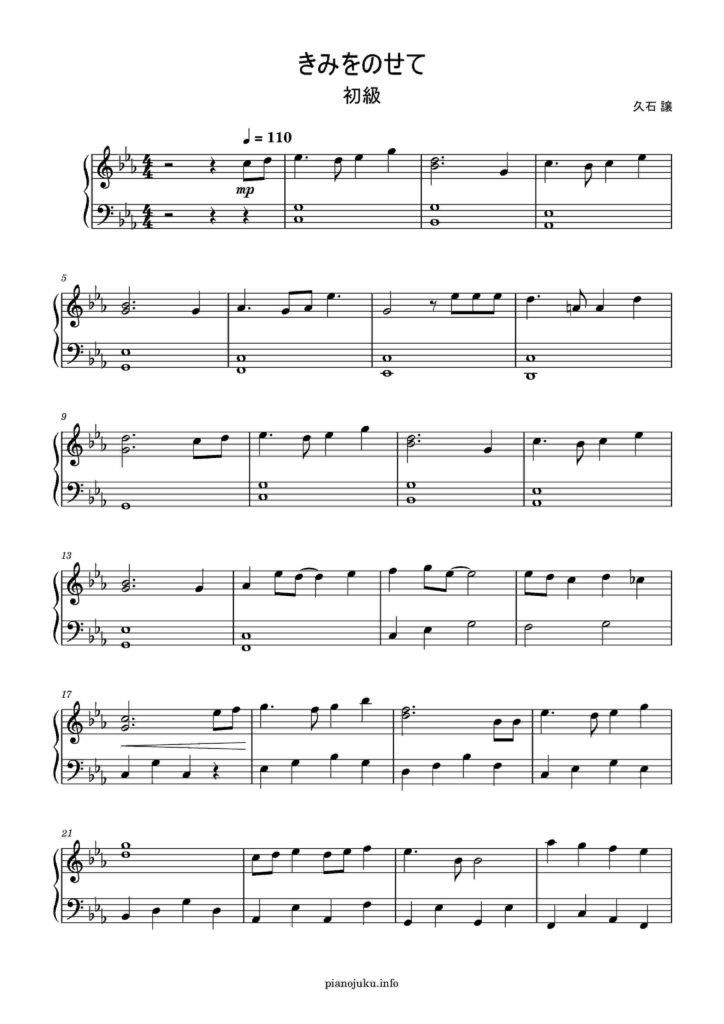
横山千恵子 says
67歳になり認知症防止の為にピアノを始めました。何を買ったら良いのか分からないのでとりあえず無料の物から始めようと思います。
匿名 says
分かりやすい
ぞうさん says
すごいね